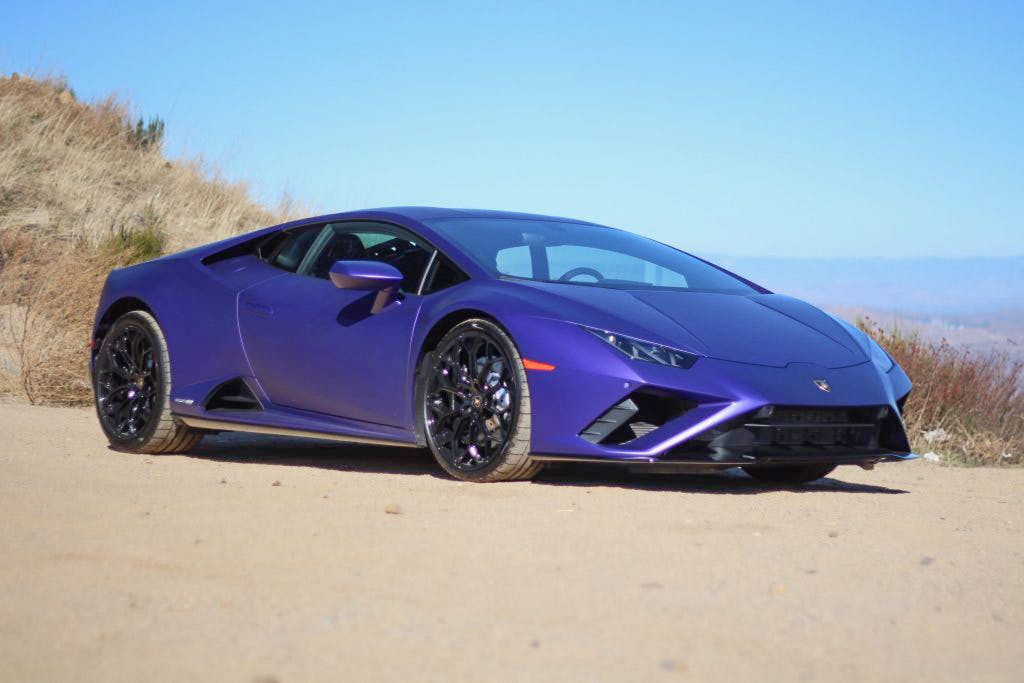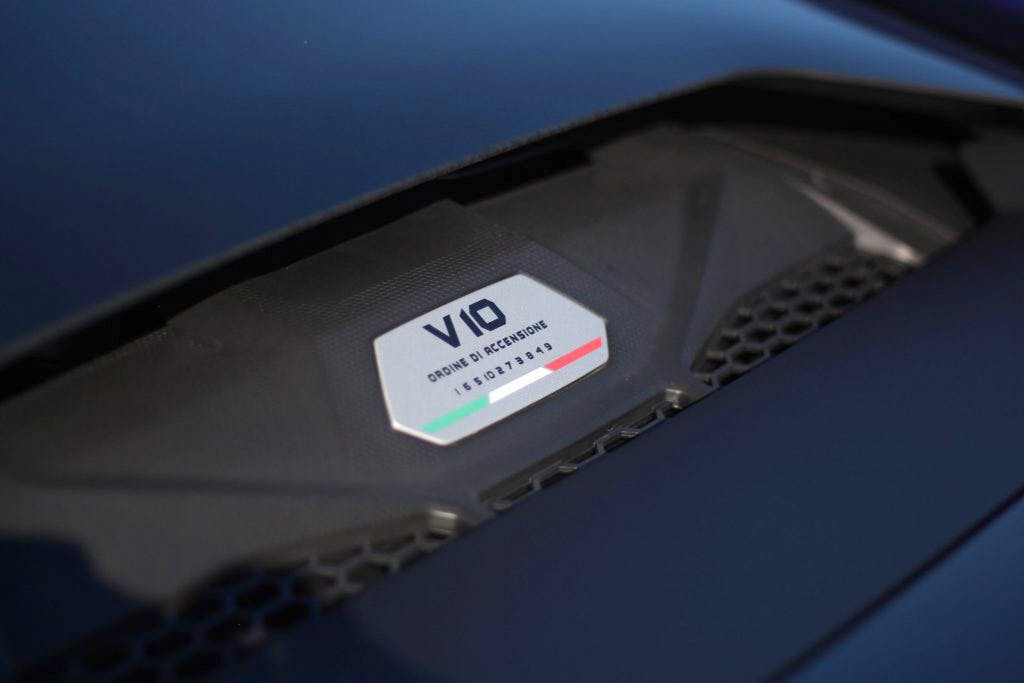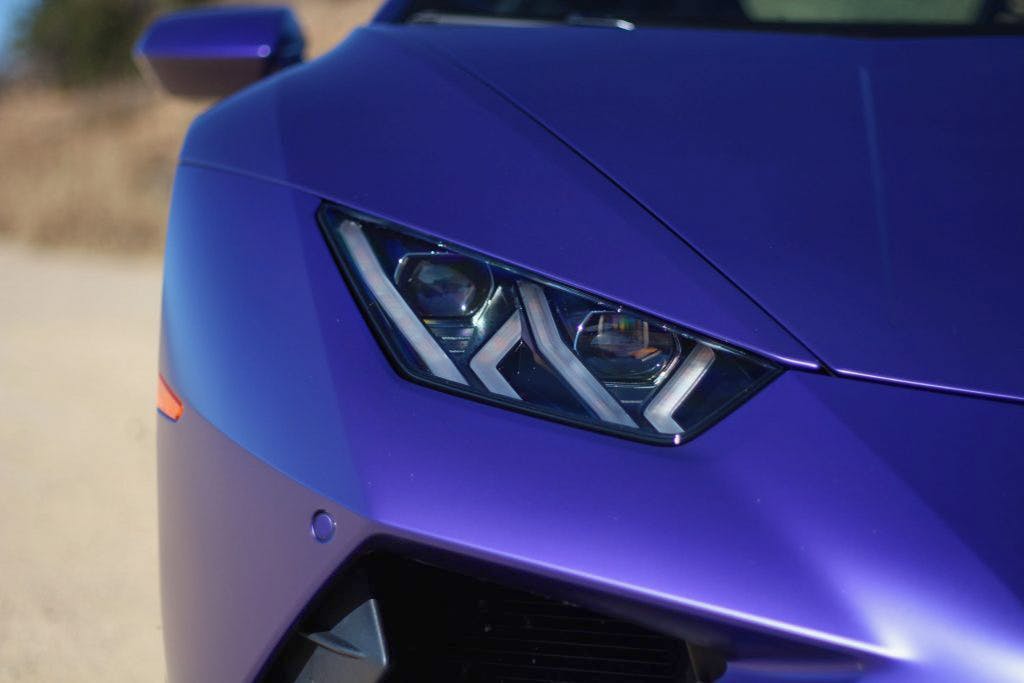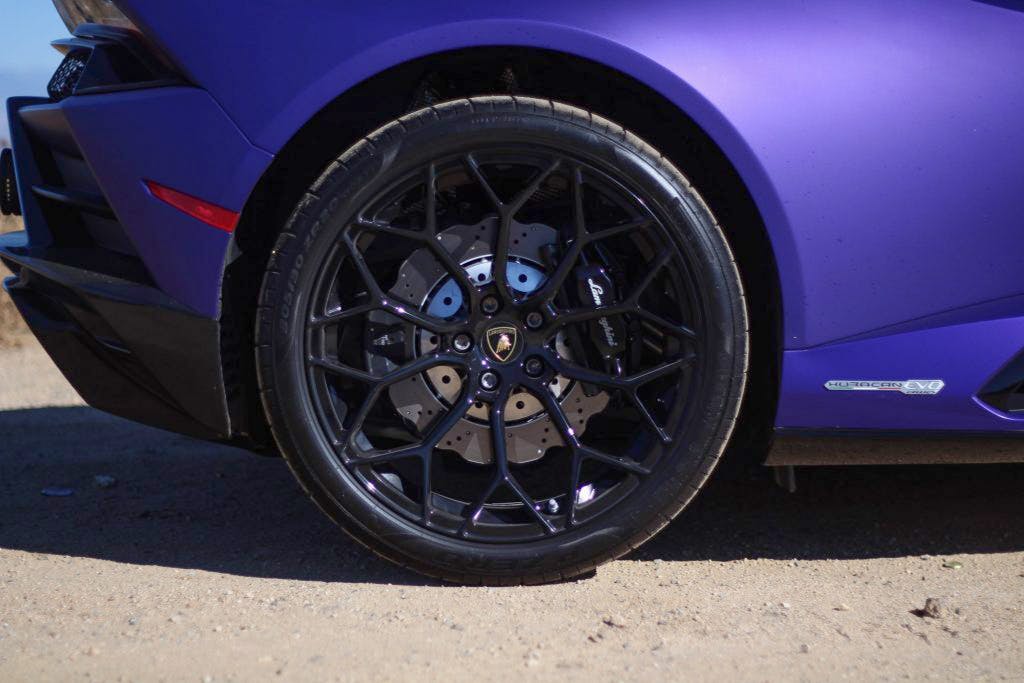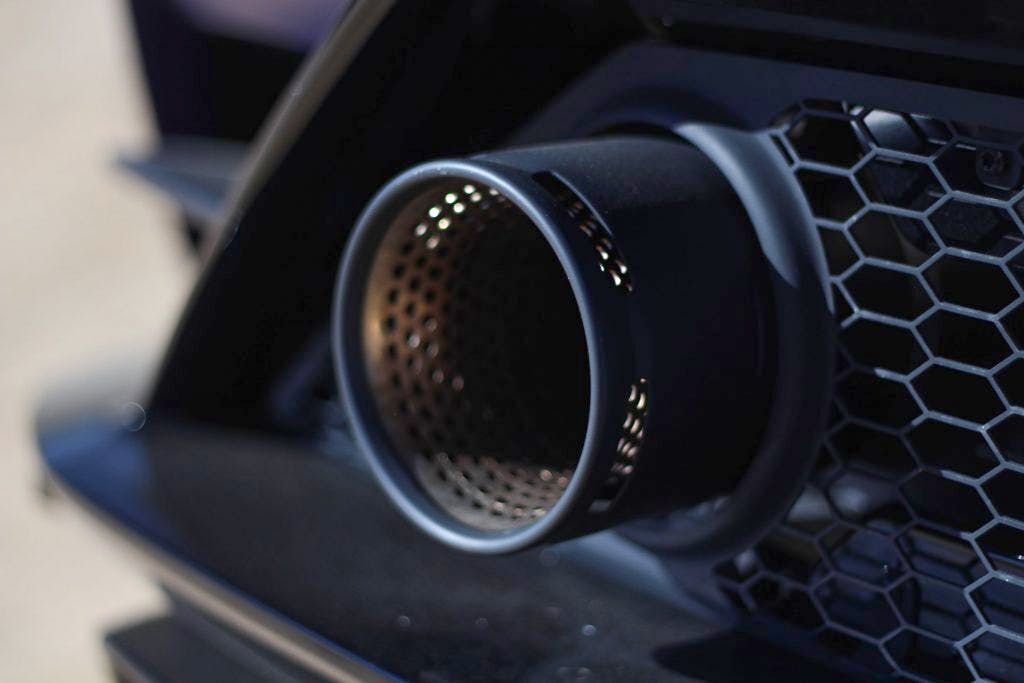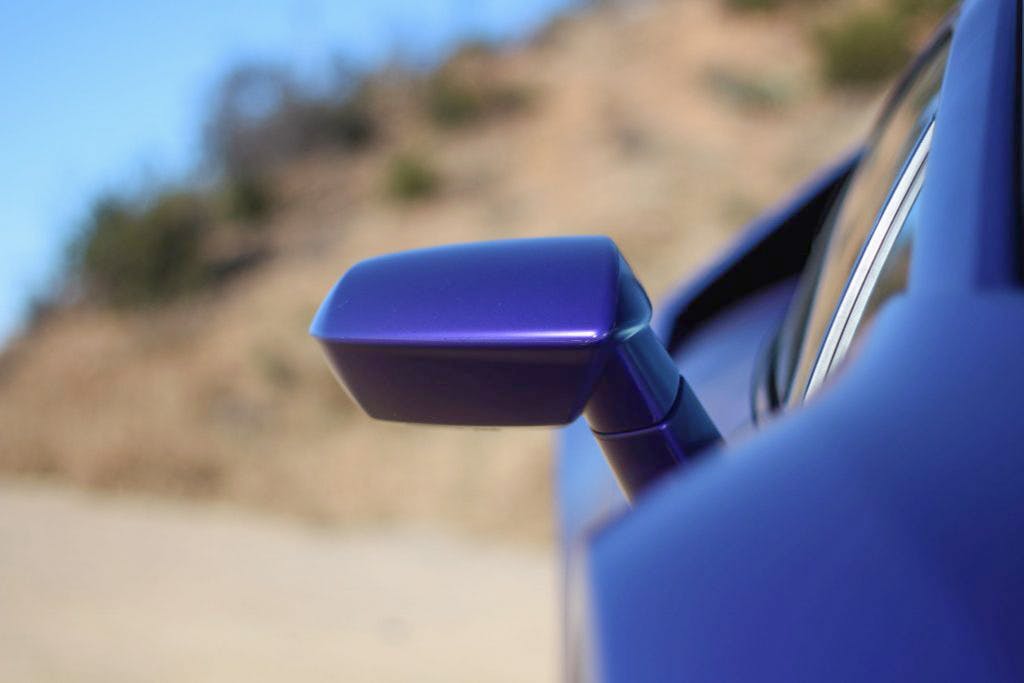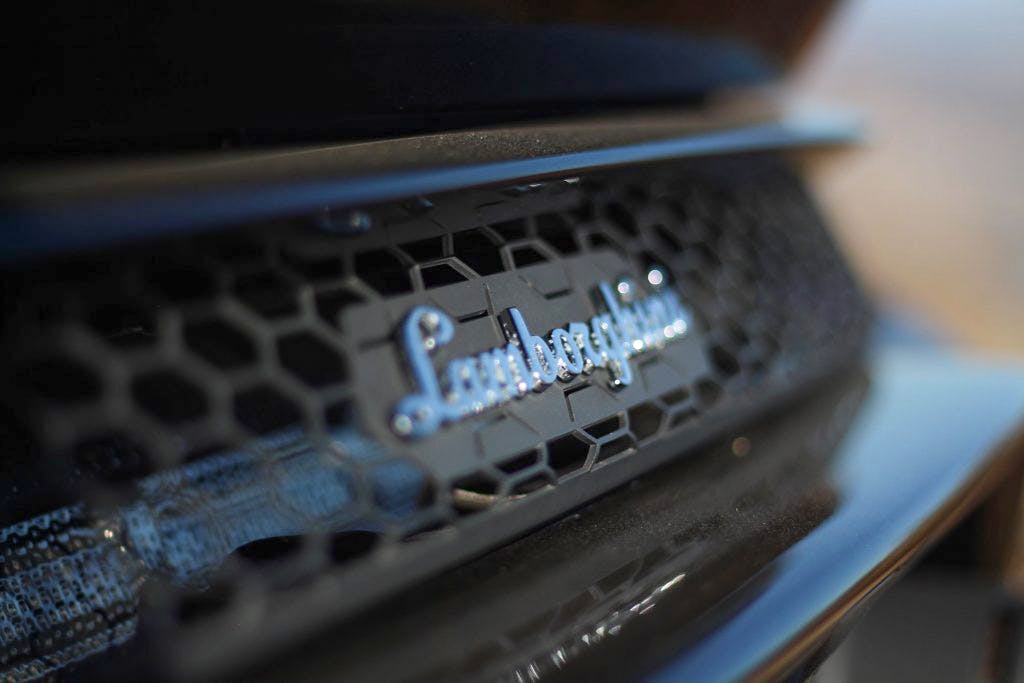The perfect modern Lamborghini is the cheapest one

The lines between sports cars, grand tourers, supercars, and hypercars are as clear and as permanent as scribbles in the mud.
Take the Porsche 911, for example. The standard coupe is the definitive sports car, but its range of variants and sub-models extends to cover every possible description. A standard convertible provides a delightful, open-air motoring experience. The Turbo performs formidable feats of acceleration, handling, and braking, but we’d never consider it a supercar. At the extreme end of the range, the most recent 911 GT2 RS posts lap times that shame some hypercars.
Authentic supercars, though, are something else. We can all agree that they must possess generous measures of impracticality, exotic looks, auditory excitement, and extreme performance. When I drive these exotics, I often wonder how we should define the cars and what we really want from them. These cars are designed and engineered to evoke a different sort of automotive thrill—they must inspire burning envy even in those who will never be able to afford them.
A supercar has to look like it’s breaking the law while standing still and deliver performance to match, but its true credentials lie beyond a dramatic exterior and an eye-popping spec sheet. A genuine supercar must provide high-quality feedback so that an experienced driver can exploit all of the car’s potential.
21st-century manufacturers load their supercars with ever-increasing amounts of power and torque, and, in seemingly equal measure, bestow enough electronic trickery upon these beasts that nearly anyone can perform perfect starts. The days of sheer impracticality and real, tangible risk are gone. Supercars no longer threaten to swap ends on a whim. The most modern of the lot are quite well-mannered and require the driver to enthusiastically use the wrong inputs at precisely the wrong time to get bent out of shape. Electronically massaged power distribution, well-resolved stability-control systems, decent balance, and powerful brakes instill the greenest pilots with sure-footed confidence.
This brings me to the 2020 Lamborghini Huracán Evo RWD.
The Huracán Evo is a development of the 2014–19 Huracán, which was the successor to the Luc Donckewolke-penned Gallardo, one of my favourite supercar designs. The Huracán can be had in multiple variants—all- or rear-wheel drive, coupe or Spyder—plus the extreme Performante and two distinct racing models, the Super Trofeo and the GT3. Across all of the configurations, the exotic looks and the wicked, naturally-aspirated 5.2-litre V-10 remain consistent. Save for the dedicated race cars, I’d driven most of the Huracán family. Each drives like a proper Italian supercar, but my tastes run towards the Performante and the rear-drive models for their more neutral handling balance.
The Evo is effectively a mid-cycle refresh that updates the styling, interior, and performance of the Huracán. It’s pure Lamborghini: visual drama inside and out with a soundtrack to match. It ticks all of the boxes in the supercar category, but this Huracán also possesses that special, elusive quality I crave.
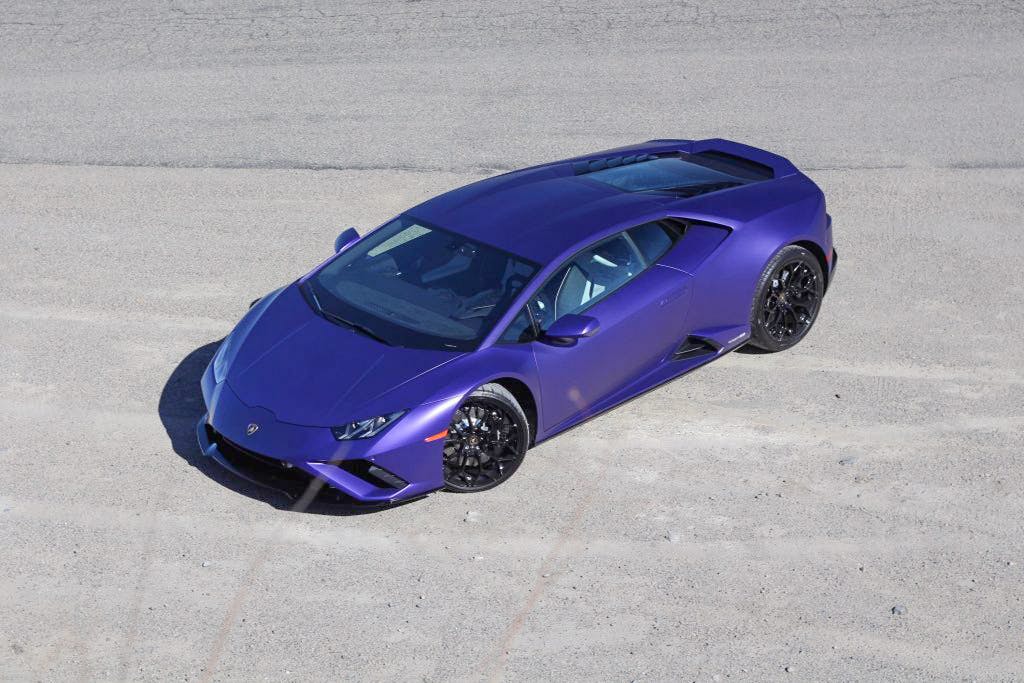
Impractical? Check. The car’s tiny frunk fits no more than a carry-on-sized suitcase, which made using my camera gear an ordeal. Whenever I wanted to change cameras or lenses, I’d stop to pop open the frunk, carefully extract my camera bag, and prop it atop the Lamborghini’s nose. Additional gear enjoyed a ride in the passenger footwell.
Signature sound? Check. Once you crack open that throttle, Ferruccio’s symphony is unleashed. There is no quiet way to start a Lamborghini, and I’m sure my neighbours were cursing me each time I fired up the dry-sump V-10 before sunrise. A ten-cylinder engine is distinctive enough by nature, but the high-pitched scream of a Huracán is laced with deep bass notes.
This small Lamborghini bristles with chiseled lines, crisp creases, muscular haunches, and a protruding pair of exhaust tips. My test car was finished in a stunning, matte viola paint, which attracted as much dust as it did attention from nearly everyone in Southern California. Exotic looks? Check.
The Huracán Evo RWD’s raw performance is astonishing given that it’s rear-drive only. The standard Huracán Evo puts its 640 hp to the ground through all four wheels. This two-wheel drive Lamborghini is detuned by just thirty horses and 19 lb-ft of torque—ostensibly to protect the transmission, differential, and half-shafts—but it has no trouble putting power to the ground. Zero to sixty is possible in under three-and-a-half seconds and, given both launch control and the right surface, even Betty White could replicate that time. A top speed of well over 300 km/h is also possible. Performance? Check.

Following our criteria, this Huracán Evo RWD meets the base criteria for a supercar, but I’m willing to argue that this is one is JUST RIGHT … though those reasons many not be immediately apparent.
What makes this car a successful supercar is that it’s designed and developed for drivers. Experienced pilots can take advantage of this model’s lighter weight and its more rear-biased distribution. Static weight distribution is said to be 40 percent front/60 percent rear, compared to the all-wheel drive’s 43 percent/57 percent split.

This Huracán Evo RWD possesses a wonderful, well-rounded character designed to reward those who can take it to its limits. Throttle response is crisp, thanks to the naturally aspirated V-10, and power is not four-figure excessive. Where the Evo RWD shines, though, is in the corners. Steering and brake feel are as clear as they are precise, and chassis feedback is top-notch. This is the kind of supercar that will gladly brake late and confidently into corners, then exit with all of the aggression and fury you’d expect from a Lamborghini.
Despite the automated gearbox, which is among the best in the business, the lighter weight of this rear-driver, the mechanical differential, and the clarity of feedback make this Lamborghini capable of satisfying the most particular of driving purists.
There is a purity to the Huracán Evo RWD’s driving experience that sets it apart from every other supercar that I’ve driven. It produces similar feeling to that of lighter, simpler sports cars like the Mazda MX-5 and Toyota 86—with much greater levels of acceleration, speed, braking, and handling.
Even better, this model is Lamborghini’s entry-level coupe and priced accordingly. My tester’s base price is $208,571 (CA); among the supercar set, that’s a relative bargain. Should you want to lavish more money on performance goodies, Lamborghini will happily indulge you. While my tester was equipped with plenty of cosmetic options, it wasn’t fitted with the expected performance equipment like carbon-ceramic brakes or adaptive dampers. Forget the insane one-off, track-only SC20: You could have yourself the complete Lamborghini supercar experience for just north of two hundred large … if you can avoid the options catalogue.
The 2020 Huracán Evo RWD is proof positive that, despite the increasing amount of electronic gimmickry, Italian exotics are still drivers’ cars at heart. This supercar enthusiastically ticks all of the necessary boxes and, on top of that, satisfies my demand for high-quality feedback. The perfect modern Lamborghini may just be the cheapest one.
